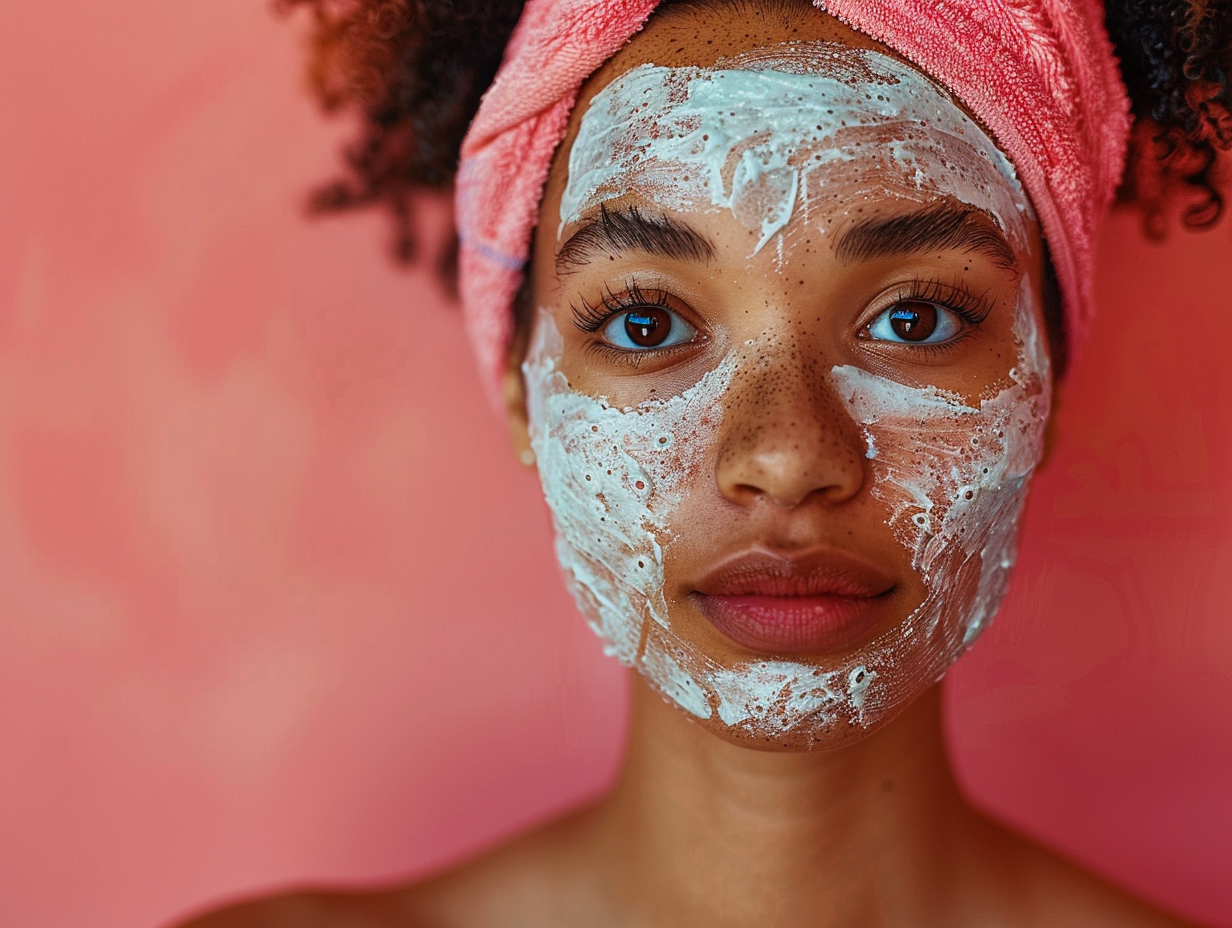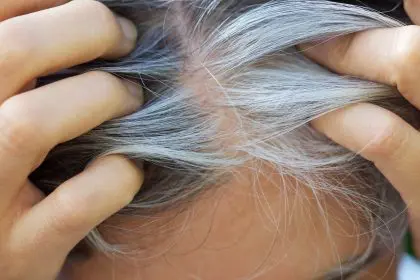That satisfying gritty feeling as you scrub your face might actually be a sign you’re damaging your skin rather than improving it. While exfoliation remains a cornerstone of healthy skin care, the harsh physical scrubs many of us grew up using now face serious scrutiny from dermatologists and skin experts. The good news? Your kitchen likely contains gentler, more effective exfoliating ingredients that work with your skin’s biology rather than against it. Natural exfoliants can deliver that smooth, glowing complexion without the microtears, inflammation, and long-term damage that aggressive scrubbing often causes. Understanding how exfoliation actually works reveals why gentler natural options often outperform their harsher counterparts.
Why your skin needs exfoliation in the first place
Your skin naturally sheds dead cells in a process called desquamation, but this self-cleaning mechanism isn’t always perfect. Factors like aging, sun damage, dry climate, and certain skin conditions can slow this natural turnover, leaving a buildup that contributes to dullness, rough texture, clogged pores, and uneven tone.
Proper exfoliation helps your skin do what it’s already trying to do. By removing accumulated dead cells from the surface layer, you reveal the healthier skin underneath and create a smoother canvas for products to penetrate. This removal process also stimulates cell regeneration, encouraging your skin to create fresh, new cells more efficiently.
The benefits extend beyond mere smoothness. Regular, gentle exfoliation can help minimize fine lines, fade dark spots, prevent breakouts, and enhance your skin’s natural radiance. It also improves the effectiveness of your other skincare products by removing barriers to absorption.
But there’s a crucial distinction between helpful exfoliation and harmful abrasion. Your skin has a protective barrier that guards against moisture loss and environmental damage. Overzealous scrubbing damages this barrier, leaving your skin vulnerable to irritation, dehydration, and inflammation. The ideal exfoliation method removes dead cells without compromising this essential protection.
This is where many commercial exfoliators fall short. Products packed with jagged particles like crushed walnut shells or fruit pits create microscopic tears in your skin. While these aggressive scrubs might feel effective in the moment, they often trigger inflammation that worsens the very problems you’re trying to solve.
Natural exfoliants, when chosen wisely, offer effective cell turnover while respecting your skin’s fundamental needs. The gentlest among them work through chemical exfoliation, using natural acids and enzymes to dissolve the bonds between dead cells rather than scrubbing them away mechanically.
The kitchen superstar that transforms skin overnight
Hiding in your fruit bowl or refrigerator is perhaps the most scientifically validated natural exfoliant available. Plain yogurt contains lactic acid, a member of the alpha-hydroxy acid family that gently dissolves the connections between dead skin cells without abrasive scrubbing.
What makes yogurt particularly exceptional is its dual-action approach to skin renewal. The lactic acid provides chemical exfoliation, while the living probiotics in unpasteurized yogurt help restore beneficial bacteria to your skin microbiome. This combination addresses both immediate texture concerns and longer-term skin health.
For best results, reach for plain, unflavored yogurt with active cultures. Greek or strained varieties work beautifully due to their higher protein content and thicker consistency that stays put on your skin. Simply apply a thin layer to clean skin, allow it to sit for 10-15 minutes, then rinse with lukewarm water.
The results tend to be noticeable quickly, with many people experiencing smoother, more radiant skin after the first application. Unlike harsher exfoliants that necessitate recovery time, yogurt-based masks can be used several times weekly without irritation for most skin types.
For enhanced benefits, combine yogurt with a small amount of honey, which adds humectant properties that draw moisture into the skin while providing mild antimicrobial benefits. This combination proves particularly effective for those dealing with both texture issues and occasional breakouts.
What makes this kitchen staple even more appealing is its affordability and accessibility. For the cost of one high-end exfoliating product, you could enjoy months of yogurt-based treatments using an ingredient that’s fresh and free from preservatives or synthetic additives.
The sweet kitchen staple that dissolves dead skin
Hidden in plain sight in your pantry sits another remarkable natural exfoliant that combines gentleness with surprising effectiveness. Raw honey offers exfoliating properties through naturally occurring enzymes and trace amounts of gluconic acid, a mild alpha-hydroxy acid.
Unlike granular exfoliants that work through physical scrubbing, honey employs a biochemical approach to skin renewal. The enzymes in raw, unpasteurized honey gently break down the proteins that hold dead skin cells together. This enzymatic action provides exfoliation without any abrasive particles that might irritate sensitive skin.
Beyond its exfoliating capabilities, honey brings additional skin benefits that make it uniquely valuable. Its natural hydrogen peroxide content provides mild antimicrobial properties, while its remarkable humectant abilities draw moisture into the skin and help maintain hydration. This dual action of exfoliating while moisturizing makes honey particularly suitable for those with dry or sensitive skin who find most exfoliants too harsh.
For optimal results, always choose raw, unpasteurized honey. The heating process in regular commercial honey destroys many of the beneficial enzymes responsible for its exfoliating properties. Manuka honey offers enhanced benefits due to its higher enzymatic activity, though it comes with a correspondingly higher price tag.
Application couldn’t be simpler. Apply a thin layer of slightly warmed honey to clean, damp skin, and allow it to sit for 15-20 minutes before rinsing thoroughly with warm water. For enhanced exfoliation, gently massage the honey in circular motions before rinsing.
Many users report immediate improvements in skin softness and radiance, with cumulative benefits developing over time. Since honey’s exfoliating action is exceptionally gentle, most skin types tolerate frequent applications without irritation or sensitivity.
The fruit acids that reveal fresh skin
Certain fruits contain natural alpha-hydroxy acids that provide remarkable exfoliation with minimal irritation risk when used properly. These fruit-derived acids work by loosening the bonds between dead skin cells, allowing them to slough away more easily without harsh scrubbing.
Papaya contains papain, a powerful enzyme that digests dead protein cells while leaving healthy tissue intact. This selective action makes papaya particularly effective for improving rough texture and addressing dullness. Fresh papaya mashed and applied as a mask for 10 minutes delivers gentle but noticeable exfoliation suitable even for sensitive skin types.
Pineapple offers bromelain, another protein-dissolving enzyme that provides efficient exfoliation. Beyond removing dead cells, pineapple enzymes help brighten the complexion and fade minor discoloration. Apply fresh pineapple juice or pulp briefly, as its potency can cause tingling that signals it’s time to rinse.
Apples provide malic acid, a gentler AHA that improves skin texture while helping balance oil production. Creating a simple mask by grating a raw apple and applying the pulp for 15 minutes delivers mild exfoliation beneficial for most skin types, particularly those prone to congestion or uneven texture.
Citrus fruits contain citric acid, which brightens and exfoliates simultaneously. However, citrus requires caution due to its potential for irritation and photosensitivity. Diluting lemon or orange juice with water or yogurt creates a safer application that still delivers meaningful exfoliation while minimizing irritation risk.
The advantage of fruit-based exfoliants lies in their natural acid balance and the presence of accompanying vitamins and antioxidants that benefit skin beyond mere exfoliation. However, these natural acids can still cause irritation if overused, so begin with brief applications once or twice weekly, gradually increasing frequency as your skin demonstrates tolerance.
The ancient grain that buffs without damage
Not all physical exfoliants damage skin, when the particles have the right shape, size, and hardness. One standout option with centuries of traditional use is rice bran powder, which offers gentle mechanical exfoliation without the harsh, jagged edges found in many commercial scrubs.
Rice bran contains ultra-fine particles that polish skin without creating microtears. The powder also contains natural enzymes and gamma oryzanol that provide additional benefits beyond the mechanical buffing action. These compounds help brighten skin tone, reduce inflammation, and protect against environmental damage.
Traditional Japanese beauty routines have incorporated rice bran for centuries, creating a creamy paste by mixing the powder with water or hydrosols. Modern adaptations often combine rice bran with honey or yogurt for enhanced effects that blend physical and chemical exfoliation methods.
The application technique matters significantly with physical exfoliants like rice bran. Rather than aggressive scrubbing, gentle circular motions with minimal pressure allow the fine particles to roll across the skin, removing dead cells without damaging healthy tissue. This restrained approach delivers improved texture without the inflammation often triggered by conventional scrubs.
Rice bran particularly excels for those seeking immediate tactile improvement in skin texture. While chemical exfoliants often deliver more dramatic long-term results, the instant smoothing effect of properly formulated physical exfoliants satisfies the desire for immediate feedback that many skincare enthusiasts crave.
For enhanced benefits, seek brown rice bran rather than white, as it retains more of the beneficial compounds found in the outer layers of the grain. Store the powder in a cool, dry place and mix fresh pastes for each application to preserve its natural enzymatic activity.
The seed oil that exfoliates and nourishes simultaneously
While most exfoliation discussions focus on removing dead cells, certain natural oils provide a unique form of exfoliation while simultaneously nourishing the skin. Grape seed oil offers this dual-action benefit through its content of polyphenols and natural fruit acids.
The particular composition of grape seed oil allows it to penetrate more deeply than many other oils, carrying its mild exfoliating compounds into the pores. There, it helps dissolve excess sebum and loosen dead cells that can cause congestion, all while delivering antioxidant protection and essential fatty acids.
This penetrating action makes grape seed oil particularly effective for those experiencing both texture issues and breakouts. Unlike many exfoliants that can dry problematic skin and trigger increased oil production, grape seed oil helps normalize sebum levels while improving overall texture and clarity.
Application works best as part of the oil cleansing method, where grape seed oil is gently massaged into dry skin for several minutes before being removed with a warm washcloth. This approach allows the oil sufficient contact time to dissolve congestion while the mild physical action of the cloth provides additional gentle exfoliation.
For enhanced benefits, combine grape seed oil with a drop or two of tea tree essential oil, which adds antimicrobial properties particularly beneficial for congestion-prone skin. This combination exfoliates while addressing multiple factors that contribute to uneven texture and breakouts.
Regular use of grape seed oil typically delivers gradual improvement rather than dramatic overnight changes. However, the progressive enhancement in skin texture comes without the irritation, redness, or sensitivity often associated with more aggressive exfoliation methods.
Creating an effective natural exfoliation routine
Developing a sustainable exfoliation practice with natural ingredients requires understanding your skin’s needs and responses. The ideal approach typically involves rotating between different gentle methods rather than relying exclusively on any single technique.
Start with less frequent applications, perhaps once or twice weekly, gradually increasing as your skin demonstrates tolerance. Even natural exfoliants can cause irritation if overused, particularly for sensitive skin types or those with underlying conditions like rosacea or eczema.
Combine exfoliation methods strategically for enhanced results. For example, a honey mask might follow a gentle rice bran polish, combining the benefits of both mechanical and enzymatic exfoliation without overwhelming your skin’s protective barriers.
Pay attention to seasonal adjustments in your routine. Most skin types benefit from more frequent gentle exfoliation in humid summer months when cellular turnover naturally increases and skin produces more oil. Winter typically calls for reduced frequency and more moisturizing formulations to complement the exfoliation process.
Respect your skin’s immediate feedback. Prolonged redness, irritation, or uncomfortable tightness after using any exfoliant, natural or otherwise, signals that you’ve exceeded your skin’s tolerance. Scale back frequency, concentration, or application time to find your personal threshold.
Remember that consistency trumps intensity when it comes to improving skin texture. Regular gentle exfoliation delivers better long-term results than occasional aggressive treatments that require recovery time. Natural ingredients support this measured approach perfectly, allowing for frequent application without the cumulative damage associated with harsh commercial products.
By understanding the science behind exfoliation and choosing natural ingredients that work harmoniously with your skin’s biology, you can achieve the smooth, radiant complexion you desire without compromising your skin’s essential protective functions. The gentle wisdom of natural exfoliants proves that effective skin renewal doesn’t require aggressive intervention, just thoughtfully applied ingredients that nature has perfected over millennia.















